Ironing board for sleeves

The sleeve ironing board is a unique device that makes life much easier for housewives and beyond. This original stand allows you to iron the sleeves well without leaving creases, while taking quite a little time. Such equipment can be purchased complete with a large-format ironing board for ironing, or you can make it yourself.
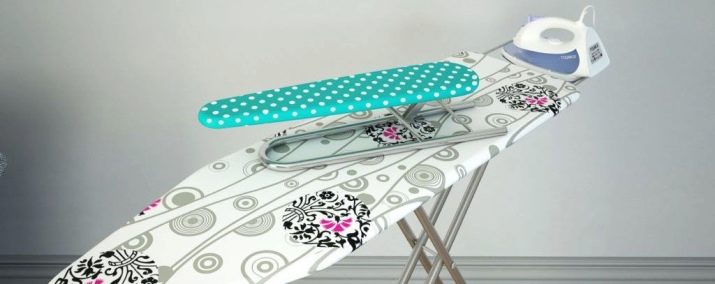
What it is?
The sleeve ironing board is a small platform with a hard surface. This iron is specially designed for ironing both short and long sleeves shirts and sweaters. The armlet is presented in the form of a narrow rectangle, but its edges must be necessarily rounded. This well-thought-out shape allows you to iron the sleeves without arrows quite quickly and easily, since any sleeve can be worn on the sleeve, regardless of its size.
A kind of mini-board is small in size, so it is very convenient to use it. It is a table top because it needs to be placed on a large ironing board or on a regular table to use it.
The ironing process will not take much time and effort, but it is worth adhering to the following algorithm:
- first, you need to put on the sleeve along the board and gently straighten it, which will avoid the appearance of folds;
- carefully walk the iron along the sleeve, while paying attention to the cuff;
- ironing the sleeves should be done exclusively in the longitudinal direction, performing actions from the inside (from the seam);
- pull the sleeve to the other side and iron it again, do not change direction.
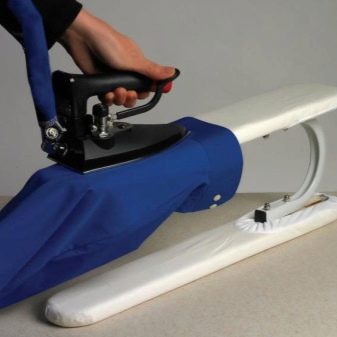

How to iron correctly?
So that the ironing process does not take much time and effort, you should pay attention to the following tips from experienced housewives who have learned how to do household chores efficiently and easily:
- an exceptionally clean thing that has already been washed should be allowed to iron;
- try not to overdry the fabric so that it does not lose its appearance and structure;
- if the clothes are very crumpled, then the use of water will help to facilitate the ironing process - the crumpled thing should be sprinkled from a spray bottle or using a steamer;
- it is very important to adhere to the temperature regime indicated on the manufacturer's label, otherwise the product may become unusable;
- to avoid the formation of shiny marks on the shirt sleeves, it is better to iron them exclusively from the inside out.
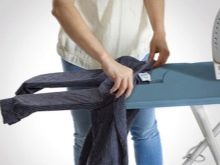
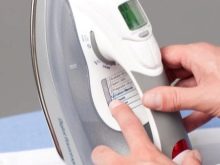

To protect the fabric of the product from fading or loss of color, it is worth using a small piece of thin fabric and ironing the thing through it.
Long
Usually on the ironing board there is a sleeve or a compact roller made of a towel. It should be used for ironing long sleeves. If such a unique device, unfortunately, is not at hand, then another method can be used as an alternative. This technology prevents the iron from touching the folds of the fabric, which prevents arrows from appearing.
It is worth adhering to the following algorithm:
- you should unfasten the button on the cuffs of the sleeves and iron from the inside out, then go to the front side;
- the sleeve must be placed on the board, with one edge hanging down a little;
- you should stroke the sleeve, but do not touch the fold itself, in order to prevent the appearance of arrows;
- after that, the product must be turned over to the second side, and this procedure must be performed again;
- further, the sleeve should be folded so that the seam is located in the middle;
- again it is necessary to put the sleeve on the ironing board, while one edge should hang down, iron it without touching the fold of the material with the iron;
- Finally, slip the sleeve onto the board through the collar, allowing you to carefully iron the shoulder of the shirt.

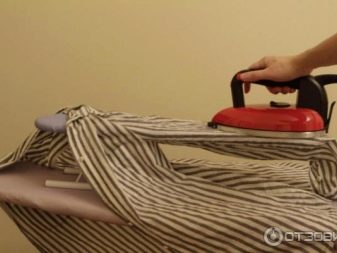
Short
Usually shirts with short sleeves are ironed in the same way as with long sleeves. This technology is suitable for all materials. But ironing short sleeves is easier because the time required is minimal.
Therefore, to iron short sleeves, it is worth following the procedure described above, and you can also use a towel roll or a special arm ruffle.
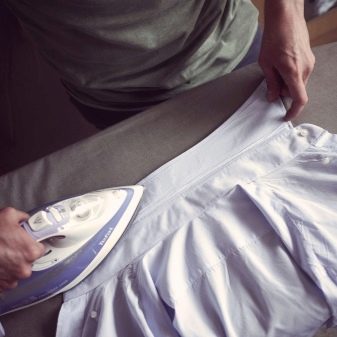

How to do it yourself?
An ironing arm can be purchased at any store that sells household goods. But if you need to iron the sleeves right now, and there is no time and desire to run to the store for this device, then you can make it yourself.
The following materials and tools should be taken:
- a board made of wood or chipboard;
- sheet of metal;
- screws and a hacksaw;
- drill.
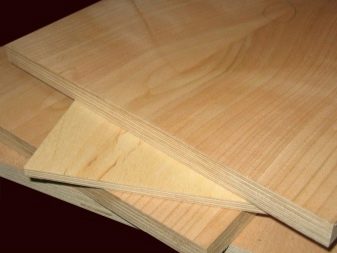

The manufacturing process for arm ruffles includes the following steps:
- you need to make a rectangle out of the board, while its size should be 10x50 cm;
- using a compass, you should make a circle on one of the sides of the board; after using a hacksaw, cut it along the formed line, you get the shape of a semicircle;
- a sheet of 10x15 cm should be made of metal, it will be used to create the bracket;
- the metal sheet must be bent in the middle, while the letter Z should be obtained;
- it is necessary to use a drill to make two holes in the upper and lower shelf of the bracket - they will be used to fix this element;
- using screws, screw the upper shelf to the lower one, and this, in turn, to the ironing board.
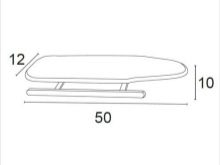
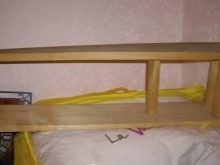

Important! Attach the mini sleeve board on the opposite side of the iron holder.
We sew a cover
If you additionally use a removable cover, you can protect the product from damage and facilitate the ironing process. To sew such a cover yourself, you should prepare the following materials and tools:
- linen or cotton fabric;
- scissors and threads;
- gum;
- synthetic winterizer or foam rubber, its thickness should be about 2 mm.

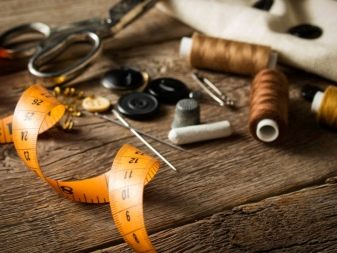
The process of creating a removable cover should be done according to the following algorithm:
- you need to start with a pattern - remove the dimensions from the board for ironing sleeves or attach the fabric to it, and then add another 5-6 centimeters around the edges;
- prepare a synthetic winterizer or foam rubber of a similar size, while the stock can be left only 2-3 centimeters;
- to make the cover with smooth edges, it is worth using a sewing machine, for sewing we choose an overlock seam;
- when sewing the cover, you should leave a small hole, because an elastic band or lace will pass through it in the future for tightening;
- put foam rubber on the board, put on a cover on top, and then pull out the material.
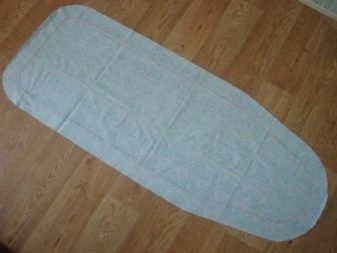
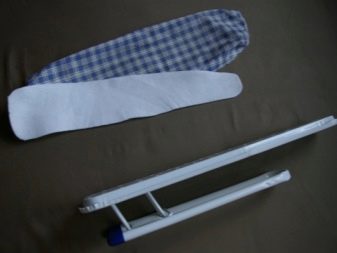
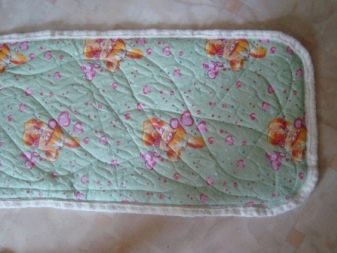
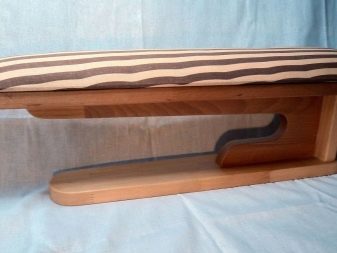
For information on how to make a DIY ironing board for sleeves, see the next video.








